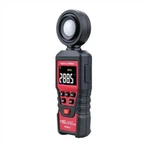Why does pH electrode need to be soaked? How to soak pH composite electrode correctly?
The pH electrode must be soaked before use because the pH bulb is a special glass membrane with a very thin gel layer on the surface of the glass membrane. It can only have good interaction with the hydrogen ions in the solution under fully moist conditions. Influence. At the same time, after soaking the glass electrode, the asymmetric potential can be greatly reduced and stabilized. The pH glass electrode can generally be soaked in distilled water or a buffer solution with pH=4. It is usually better to soak in a pH=4 buffer solution, and the soaking time is 24 hours or longer, depending on the thickness of the bulb glass membrane and the aging degree of the electrode. At the same time, the liquid junction of the reference electrode also needs to be soaked. Because if the liquid junction dries up, the potential of the liquid junction will increase or become unstable. The soaking solution of the reference electrode must be consistent with the external reference solution of the reference electrode, that is, 3.3mol/L KCl solution or saturated KCl solution. The soaking time is usually a few hours.
Therefore, the pH composite electrode must be soaked in a pH=4 buffer containing KCl so that it can act on the glass bulb and liquid junction at the same time. Special attention should be paid here, because in the past, people who used a single pH glass electrode were accustomed to soaking it in deionized water or pH=4 group flushing liquid. Later, when using pH composite electrodes, they still used this soaking method, even in some incorrect cases. This kind of erroneous guidance will also be given in the instruction manual of the pH combination electrode. The direct consequence of this wrong soaking method is that a pH composite electrode with good performance becomes an electrode with slow response and poor accuracy, and the longer the soaking time, the worse the performance, because after a long soak, the liquid junction The KCl concentration inside (for example, inside the sand core) has been greatly reduced, making the liquid junction potential increased and unstable. Of course, the electrode will recover as long as it is re-soaked in the correct soaking solution for a few hours.
In addition, the pH electrode cannot be immersed in neutral or alkaline buffer solutions. Long-term immersion in such solutions will cause the pH glass membrane to respond slowly.
Preparation of the correct pH electrode soaking solution: Take a pack of pH=4.00 buffer (250mL), dissolve it in 250mL pure water, then add 56 grams of analytical grade KCl, heat appropriately, and stir until completely dissolved.






